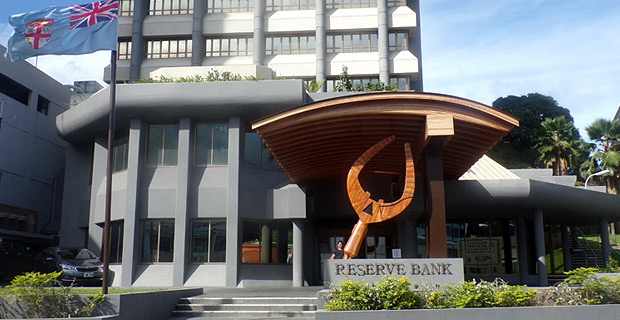
The Reserve Bank of Fiji states that the Fijian economy is expected to grow by a lower 1 percent in 2019, from the 3.5 percent growth last year due to the persistent weak business confidence and reduced government spending.
The RBF says latest domestic sectoral performances reveal mixed outcomes.
In the year to October, low ore quality and difficult mining conditions led to a decline in gold production, dwindling construction activity contributed to lower pine (-12.9%) and sawn timber production (-10.8%) and lower foreign demand led to lower woodchip production.
The RBF says on the upside, as at 25th November 2019, both cane (2.9%) and sugar production (0.7%) increased marginally over the year. Mahogany production has also improved significantly following poor performance in the past two years and expanded by 61.7 percent so far into the year.
Electricity production (+3.5%) and consumption (+4.1%) both increased up to the third quarter of the year while industrial production index noted a marginal 2.0 percent increase in the first half of the year.
The Reserve Bank says in the services sector, visitor arrivals noted an annual growth of 3.2 percent cumulative to October driven by higher number of tourists from the United States, New Zealand, Japan and Pacific Islands.
In the year to October, commercial banks’ new lending for consumption purposes declined by 6.8 percent while domestic VAT (+2.4%) only noted a marginal increase. Over the same period, both new and second-hand vehicle registrations declined. Similarly, new bank lending for investment purposes shrunk by 20.1 percent in the year to October while domestic cement sales declined by 8.7% cumulative to September, pointing to sluggish construction activity.
The Reserve Bank of Fiji also says recruitment intentions have also softened in line with the moderating economic activity. As per the RBF’s Job Advertisement Survey, the total number of job vacancies declined by 1.4 percent in the year to October on account of lower recruitment intentions for the transport, storage and communication, electricity and water, mining and quarrying, agriculture and forestry and fishing sectors.
Excess liquidity in the banking system grew over the month in October by 0.5 percent to $615.8 million, largely due to an increase in foreign reserves.
The annual inflation rate declined to 0.9 percent in October, lower than the 0.4 percent increase noted in October and much lower than the 5.2 percent growth recorded in the same month in 2018. The Reserve Bank says this is largely attributed to lower prices noted for the communication, alcoholic beverages, tobacco and narcotics, housing, water, electricity gas and other fuels and transport categories.
Foreign reserves continue to remain at comfortable levels and were around $2.190 billion at the end of November, sufficient to cover 5.1 months of retained imports of goods and services.
Meanwhile the world economy this year is expected to grow at its slowest rate since the global financial crisis. A downturn in manufacturing and investment activity, costlier global trade and ongoing policy uncertainty are weighing on global and trading partner growth.
Stay tuned for the latest news on our radio stations

